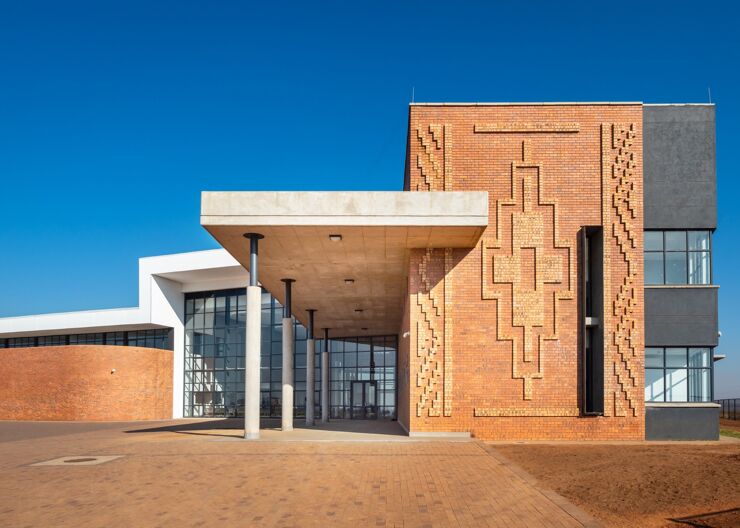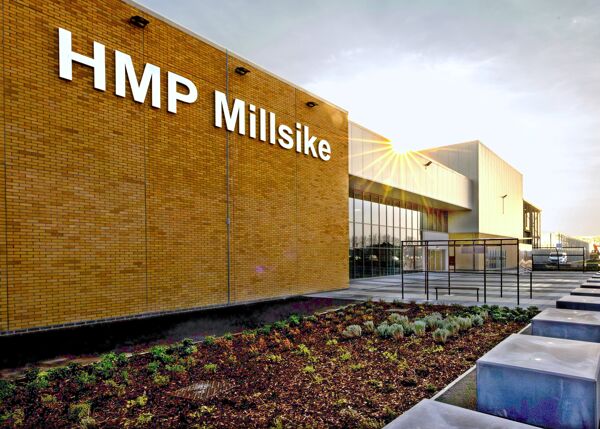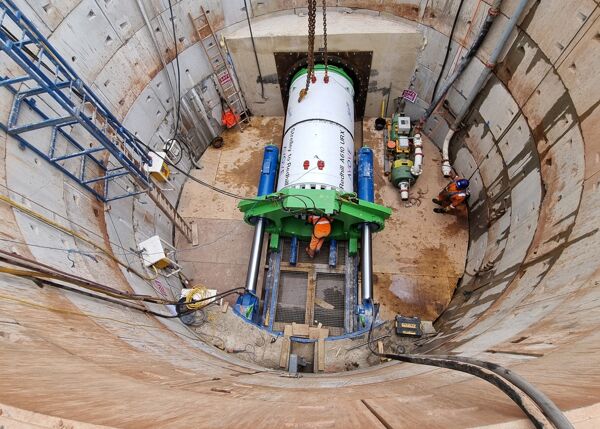
NEC has been used to deliver a new fully equipped 220-bed district hospital in Mpumalanga Province, South Africa. For its outstanding work on the King Nyabela Hospital in Middelburg, contractor Enza Construction was voted runner-up in the 2025 NEC Martin Barnes Contractor of the Year Award.
Client Mpumalanga Department of Public Works, Roads and Transport (DPWRT) awarded the design and construction to Enza in July 2017 under a R1.6 billion (£67 million) NEC3 Engineering and Construction Contract (ECC) Option A (priced contract with activity schedule). Building started in 2019 and the first patients started transferring from the existing Middelburg Hospital, which is no longer fit for purpose, in August 2025.
 The new 44,000 m2 complex of two-storey, masonry and steel buildings provides an extensive range of healthcare services, including outpatient care, maternity services, trauma and emergency care as well as specialised services such as oncology, dialysis, medical imaging and pathology. Facilities include 220 ward beds, four theatres, a 400-seat auditorium, creche, café, training centre and staff accommodation. Provision has also been made for expansion to 350 beds and two more theatres.
The new 44,000 m2 complex of two-storey, masonry and steel buildings provides an extensive range of healthcare services, including outpatient care, maternity services, trauma and emergency care as well as specialised services such as oncology, dialysis, medical imaging and pathology. Facilities include 220 ward beds, four theatres, a 400-seat auditorium, creche, café, training centre and staff accommodation. Provision has also been made for expansion to 350 beds and two more theatres.
The NEC project manager and supervisor was Motse Lmi Architects.
New approach
Julius Mavhungire, director: implementation (health and others) at DPWRT, says ECC Option A was chosen to minimise the duration of the project by transferring the design and construction risks to the contractor. ‘The design-and-build approach was a relatively new concept for the Mpumalanga government. Despite substantial construction challenges, such as community unrest and Covid-19, the contractor was able to deliver a state-of-the-art facility in around the same time it would have taken to finalise the designs.’
He says the employer, contractor and project manager always tried to collaborate in line with the NEC requirement for the parties to ‘act in a spirit of mutual trust and co-operation’. ‘NEC early warnings were used throughout the works to flag up and mitigate potential risks to the prices or completion date. These and notified compensation events were discussed at regular risk-reduction meetings and helped to mitigate delays and cost increases.’
Mavhungire says there were many compensation events on the project due to changes in the works information and other challenges. ‘The contractor submitted programmes for acceptance by the project manager on a regular basis, as required by the contract, which meant we always had full transparency on progress. The NEC activity schedule enabled the project manager to control costs in terms of monthly payments to the contractor, recording accepted compensation events and other costs.’
Empowering subcontractors
Tim Rowbottom, contracts director at Enza, says all subcontractors were engaged under back-to-back NEC3 ECC Option B (price contract with bill of quantities). ‘The “back-to-back” approach not only fostered trust and collaboration but also upheld NEC’s ethos of encouraging teamwork while fairly protecting all parties’ interests.’
He says subcontractors actively participated in the design and execution, fostering a collaborative value-engineering approach. ‘Cost savings were shared among subcontractors and consultants, ensuring continuous innovation and efficiency.’
Rowbottom says a key challenge was the contractor’s obligation to use and develop local subcontractors ‘A key risk was ensuring local companies managed their cash flow effectively. We held monthly meetings, guiding subcontractors through their claims and expenses while also providing NEC contract training to empower them in managing their contractual entitlements.’
Supportive employer
Matla Matetoa, managing member at Motse Lmi, says that, despite the many challenges the project was subjected to, the employer was unwavering in its support to the project manager and contractor. ‘By cultivating an environment of transparency, DPWRT enabled open discussions about risks, allowing for proactive mitigation strategies that minimised project delays. Its commitment to continuous engagement, problem-solving and mentorship created a resilient, solutions-driven partnership.’
He says DPWRT’s ‘open-door’ policy ensured risks were addressed daily, fostering accountability and collaboration that drove project success. ‘Ultimately, this approach transformed challenges into opportunities, ensuring that the project remained on track while leaving a lasting impact on local businesses and the broader community.’
Benefits of using NEC
- NEC procurement of both design and construction shortened the overall project duration, with all subcontractors and consultants collaborating on design.
- ECC Option A removed contractual risk from the employer while encouraging a collaborative approach.
- NEC early warning process helped to ensure that risks were quickly identified and mitigated, helping to keep delivery on time and budget.
- NEC compensation event process and back-to-back NEC subcontracts ensured the supply chain was fairly compensated.




